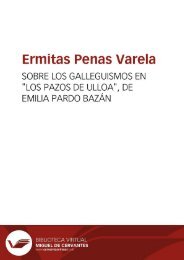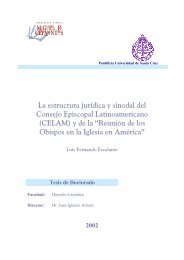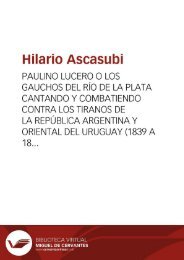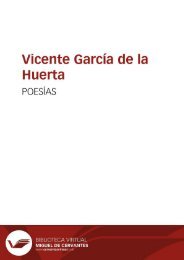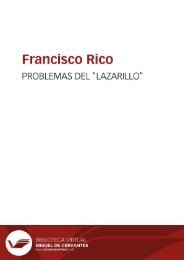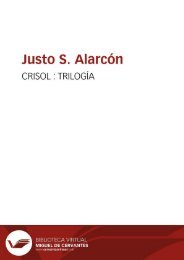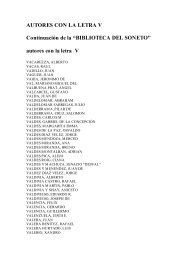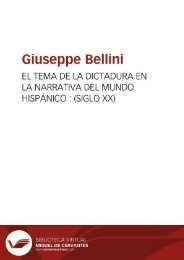You also want an ePaper? Increase the reach of your titles
YUMPU automatically turns print PDFs into web optimized ePapers that Google loves.
Anales galdosianos [Publicaciones periódicas]. Año XII, 1977<br />
function in the letters; they not only convey feelings and emotions, fears and aspirations, but aim also<br />
to provoke reactions in the person they address.<br />
In the last third of the novel the narrator (and <strong>Galdós</strong>) retreat into the shadows: « se repliega al papel<br />
de observador », as Marina Mayoral puts it. He no longer interprets: he limits himself to reporting<br />
events, and toward the end admits to being in the dark as to the character's motivations and intentions.<br />
« ¿sería, por ventura, aquella su última metamorfosis? » the narrator asks regarding Tristana's new<br />
religious inclinations. « ¿O quizá tal mudanza era sólo exterior, y por dentro subsistía la unidad<br />
pasmosa de su pasión por lo ideal? » (V, 1610). He doesn't know. And the characters live in similar<br />
ignorance of themselves. « Guardábase bien el viejo de hablar a la niña del que fue su adorador, y con<br />
toda su sagacidad y experiencia, nunca supo fijamente si la actitud triste y serena de Tristana ocultaba<br />
una desilusión, o el sentimiento de haberse equivocado profundamente al creerse desilusionada en los<br />
días de la vuelta de Horacio. ¿Pero cómo había de saber esto D. Lope, si ella misma no lo sabía? » (V.<br />
1609). Reality thus becomes a limbo of uncertainty, and the narrator who spoke with such authority<br />
in the beginning can only wonder at the end: « ¿Eran felices uno y otro?... Tal vez ».<br />
As we have seen, the fabric of the novel is made up of numerous strands, many of them departures<br />
from the 19th century novelistic norm in both content and form. To recapitulate: contrary to the<br />
expectations of friends and critics, <strong>Galdós</strong> could only see the social phenomenon of feminism as<br />
something problematic; creatively he could only approach it in terms of the character's inter-personal<br />
relationships. Women who have been denied sell-realization for so long, he concluded, will proceed<br />
with fear and self-doubt. Thus he gives us in Tristana a creature of contradiction who, even in moments<br />
of bravado, feels insecure and weak and must bolster her spirit with dreams and illusions. In her search<br />
for fulfillment the only models she can follow are men. To her they are the enemy and paradoxically<br />
her salvation. A relationship with them can offer no true communion.<br />
<strong>Galdós</strong> views this discord with ironic: sadness and a rueful retrospective glance at tradition. The<br />
literature of the past, he implies, offers mostly examples of this spiritual alienation between the sexes.<br />
By subverting the literary formulas -satiric or romantic images of victim and victimizer- he means to<br />
upset, or at least question, the conventions that maintain men and women at odds. The literature of<br />
the future, he would soon propose, must pave the way for reconciliation and understanding.<br />
Recent studies have pointed to possible autobiographical elements in the novel. The character of<br />
Tristana and her letters are said to have been inspired by real models, and Don Lope and Horacio<br />
156







